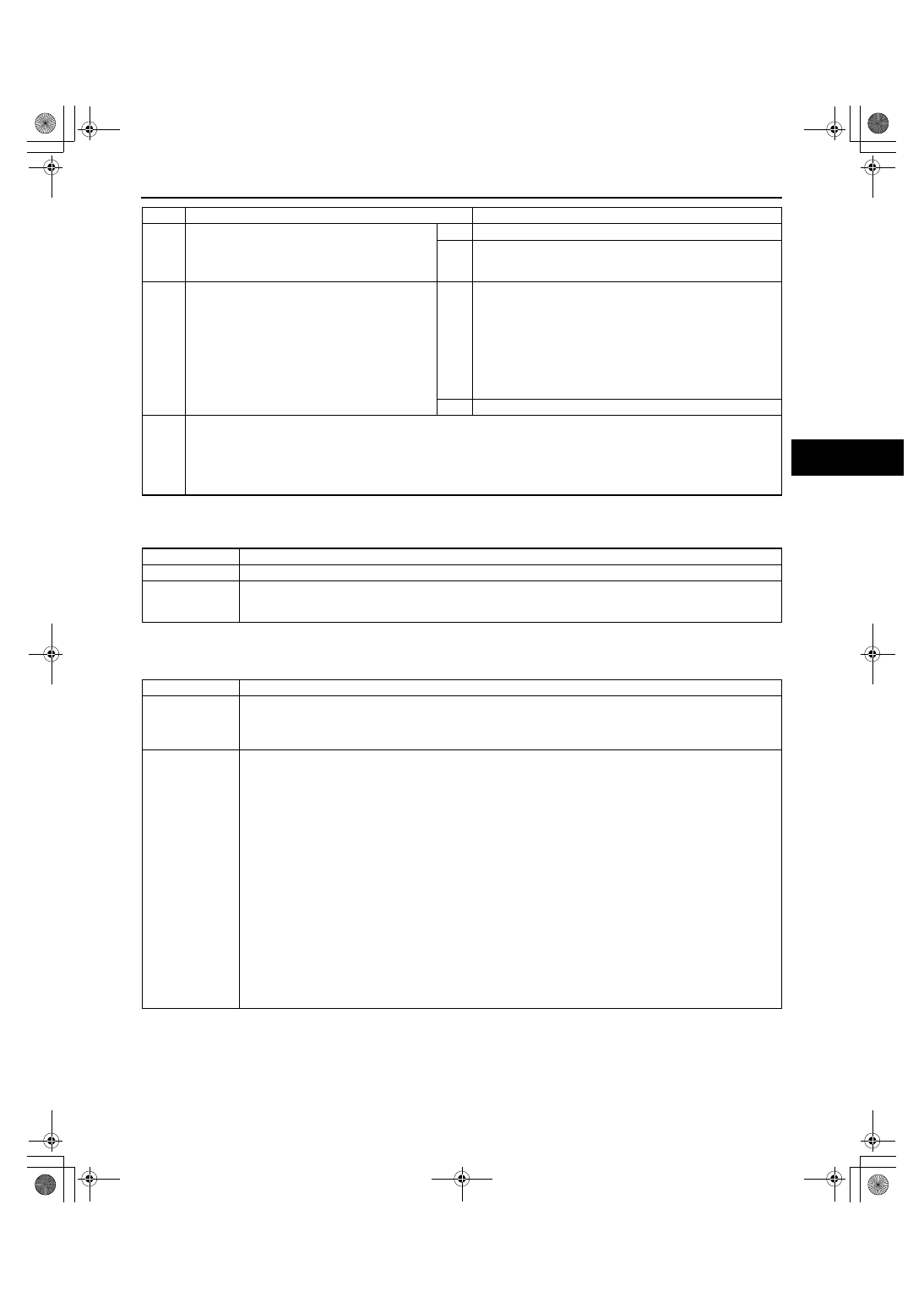Mazda CX 7. Manual - part 250

SYMPTOM TROUBLESHOOTING [AW6A-EL, AW6AX-EL]
05-03–19
05-03
End Of Sie
NO.13 NO KICKDOWN[AW6A-EL, AW6AX-EL]
id050310801800
End Of Sie
NO.14 ENGINE FLARES UP OR SLIPS WHEN UPSHIFTING OR DOWNSHIFTING[AW6A-EL, AW6AX-EL]
id050310801900
3
• Inspect the line pressure control solenoid.
(See 05-17-20 SOLENOID VALVE
INSPECTION[AW6A-EL, AW6AX-EL].)
• Is the line pressure control solenoid normal?
Yes
Go to the next step.
No
Replace the control valve body.
(See 05-17-38 CONTROL VALVE BODY REMOVAL/
INSTALLATION[AW6A-EL, AW6AX-EL].)
4
• Remove the torque converter.
(See 05-17-46 TORQUE CONVERTER
REMOVAL/INSTALLATION[AW6A-EL,
AW6AX-EL].)
• Inspect the torque converter.
• Is the torque converter normal?
Yes
Inspect the ATF condition.
• If a large amount of metal specks are found, replace the
transaxle.
(See 05-17-29 AUTOMATIC TRANSAXLE REMOVAL/
INSTALLATION[AW6A-EL, AW6AX-EL].)
• If a large amount of metal specks are not found, replace
the control valve body.
(See 05-17-38 CONTROL VALVE BODY REMOVAL/
INSTALLATION[AW6A-EL, AW6AX-EL].)
No
Replace the torque converter.
5
• Verify test results.
— If normal, return to the diagnostic index to service any additional symptoms.
— If malfunction remains, inspect the related Service Bulletins and/or On-line Repair Information and perform
repair or diagnosis.
• If the vehicle is repaired, troubleshooting completed.
• If the vehicle is not repaired or additional diagnostic information is not available, replace the TCM.
STEP
INSPECTION
ACTION
13
No kickdown
DESCRIPTION
• Does not downshift when accelerator pedal is fully depressed within kickdown range.
POSSIBLE
CAUSE
• If transaxle does not downshift though shifting is normal, the malfunction is in the accelerator pedal
position sensor and accelerator pedal position sensor circuits (including sensor GND, sensor wiring
harness and connector).
14
Engine flares up or slips when upshifting or downshifting
DESCRIPTION
• When the accelerator pedal is depressed for acceleration from standstill, engine speed increases but
the vehicle speed increases slowly.
• When the accelerator pedal is depressed while driving, engine speed increases but the vehicle speed
does not.
POSSIBLE
CAUSE
• There is clutch slippage because the clutch is stuck or the line pressure is low.
— Clutch stuck, slippage (C1 clutch, C2 clutch, C3 clutch, B1 brake)
• Line pressure low
• Incorrect accelerator opening signal
• VSS malfunction
• Input/turbine speed sensor malfunction
• Sensor GND malfunction
• Shift solenoid C malfunction
• Shift solenoid D malfunction
• Shift solenoid E malfunction
• Line pressure control solenoid malfunction
• TCC control solenoid malfunction
• Shift solenoid F malfunction
• Body GND malfunction
• Control valve body malfunction
Note
• Before following the troubleshooting steps, make sure that the Automatic Transaxle On-Board
Diagnostic and Automatic Transaxle Basic Inspection are conducted. (See 05-03-3 BASIC
INSPECTION[AW6A-EL, AW6AX-EL].)
1871-1U-06B(05-03).fm 19 ページ 2006年3月15日 水曜日 午前11時19分